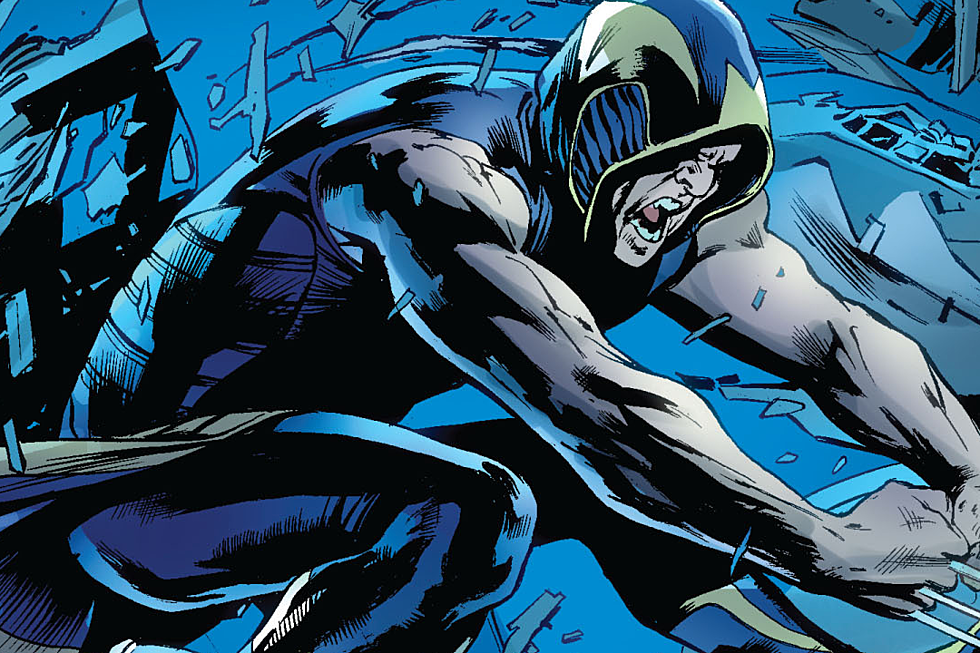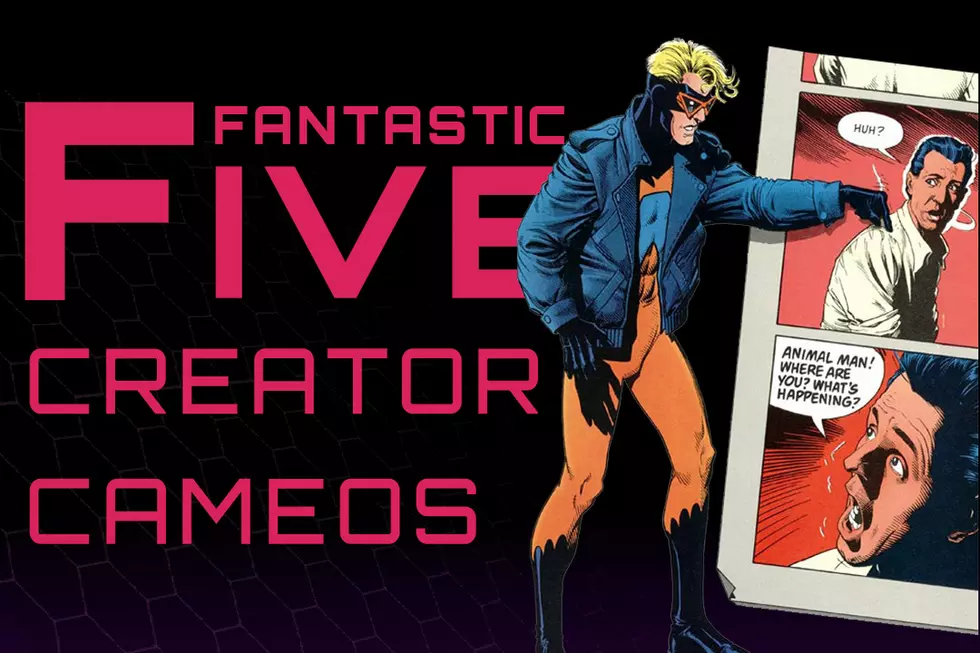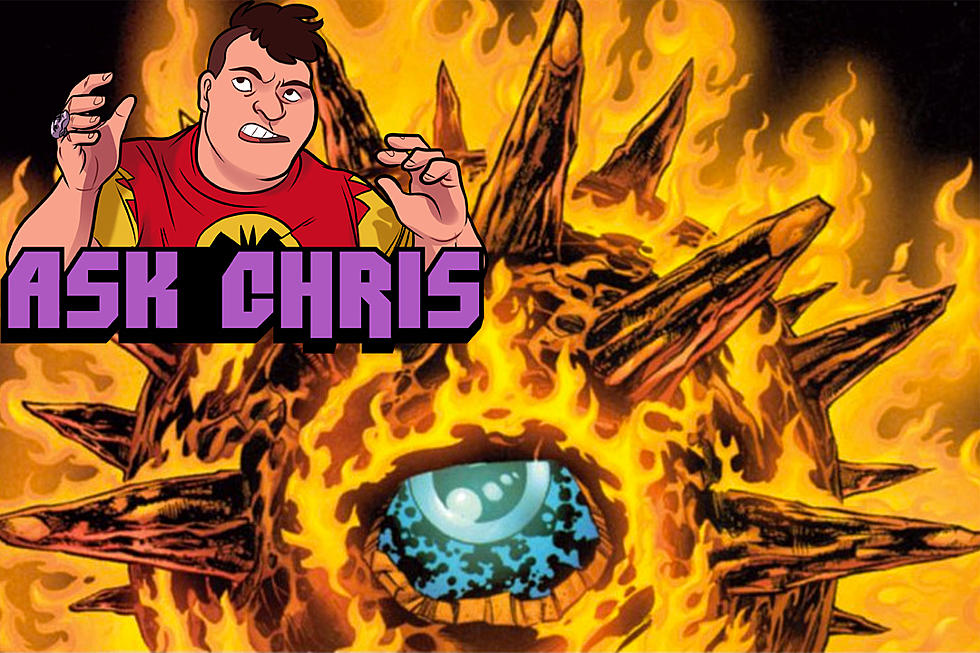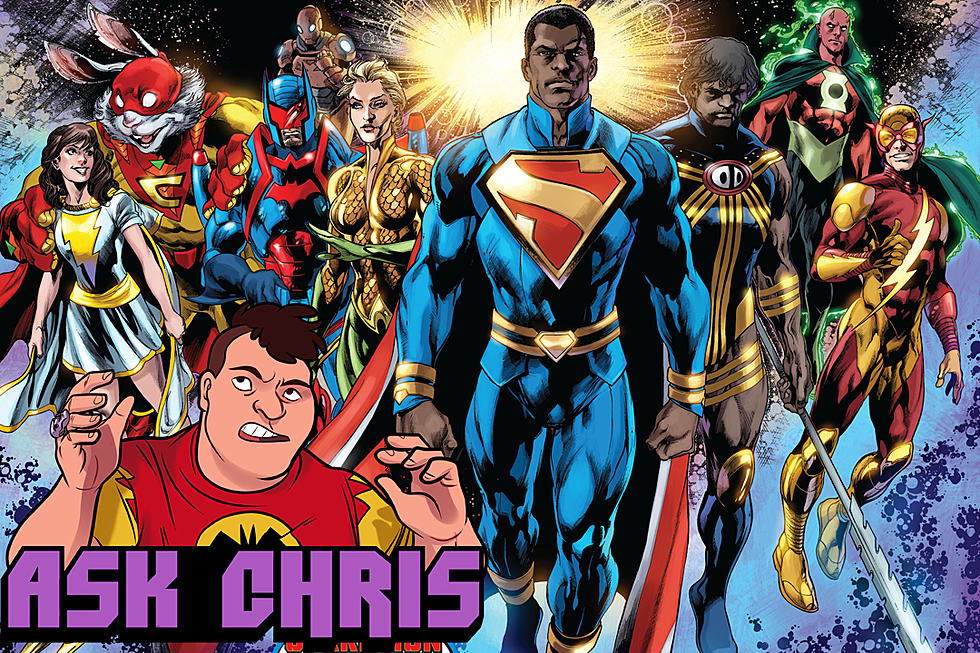
Ask Chris #284: Aztek, The Ultimate Man
Q: What's the deal with Aztek? -- @LOTR_Dan
A: Well, this one's easy: Aztek is a hero for the new millennium -- if he lives that long! And, you know, I don't want to spoil the ending for you or anything, but he actually does, even if it's kind of on a technicality. I mean, when you get right down to it, "a hero for about three months into the 21st century before he explodes in space and is never seen again" probably wouldn't fit on the cover.
Trust me, though. It's better than it sounds.
Still, I think it's important to mention right up front that Aztek is a book built around a grand, genuinely epic story that spans thousands of years and involves a ready-made heroic legacy and a cosmic threat to the entire DC Universe, and it almost doesn't get a chance to actually deliver on anything it promises. That's not particularly unique to Aztek, though. As much as it's easy to look back on the late '90s as a time when DC was willing to throw a whole lot of new ideas out there to build up the stranger, more offbeat corners of their universe, it was also a time when those titles very rarely ended up sticking around.
For every Starman or Hitman that managed to last for years and tell a long-running story, you had a handful of books like Hourman or Chase -- books that were beautiful, innovative, and extremely clever, but that only ever stayed around for a year or two, if that. Aztek was, unfortunately, a starring member in that second category, and more than anything else, that's kind of what defines it, especially in retrospect.
I mean, seriously: Looking back from here in the future, where they're two of the most successful creators in comics, can you even imagine that a book co-written by Mark Millar and Grant Morrison would somehow be canceled after ten issues? They didn't even get a full year!
Although to be fair, they didn't exactly create a particularly inviting setup.
From the first page, Aztek is weird -- studiously so, in fact. It's built around the idea of introducing and then subverting the tropes of the superhero genre, playing off of the idea that Things Now are different from and a whole lot darker than the way Things Used To Be, and that maybe, if we look close enough, we'll find that for good or ill, things haven't changed as much as we might think, at least in Vanity. It's a city where everything becomes corrupt, filled with occult architecture and unknowable streets, and on top of that, it's been designated as the site of an impending apocalypse that should be getting here any day now.
If all of this sounds familiar, it's because each of those elements are drawn from the same kind of ideas that seem to have fascinated Morrison throughout his career in superhero comics. There's a lot of what he'd later do in more depth in his years on the Batman titles that you can see forming here, including an exploration of the Joker spontaneously emerging into a new persona every time he's defeated in a sales-boosting Special Guest Villain appearance. But at the same time, it's far from a one-man show -- the characters speak with a lot of Millar's signature dialogue tics (and a little of his infamous amorality), and it's all rendered in this unique style of clean figures on gritty backgrounds by N. Steven Harris that helps to reinforce what's happening in the city itself, and raises the question of how long it's going to take before the city works its corrupting fingers into Aztek himself.
The thing is, that's all stuff that's going on on page one. We're being dropped into all of this at the same time that Aztek is, and rather than setting things up so that readers can get a handle on what's going on, Aztek is a book that meanders its way through establishing its setting and its hero's reaction to it rather than, say, explaining its central conceit.
It's actually a pretty bold choice, and while that sounds like a complaint, it's really not. That messiness, the fact that nobody has all of the information that they need right at the start (or even at the end) gives the book an off-balance, disorienting feeling that really helps to underline the themes that they're working with. At the end of the day, though, it's still a book that doesn't bother to explain why Aztek is here and what he's supposed to be doing until its fifth issue.
Heck, that guy doesn't even have a name until the last page of #2.
Looking at it that way, it's kind of easy to see why it might not get a foothold with readers. Don't get me wrong, I love it, but I read it as a full run that I picked up well after the fact, once the entire story had been resolved and the title character was deader than a doornail. Reading it monthly at a time when paperback collections were nowhere near as common as they are now, I can see how it might've lost a few readers when this was the only explanation of its premise that it offered in its first three months:
So here are the basics: Aztek -- Or Uno, as he's known to the folks back in South America -- is the latest in a long line of warriors trained by a mysterious organization currently known as the Q Foundation. They've had many names over the past few thousand years -- Group, Brotherhood, and so on -- but the Q remains constant, and with good reason. They serve Quetzalcoatl, the Aztec god who long ago banished Tezcatlipoca -- the god of hurricanes, war and strife whose name is often given the incredibly awesome translation "Smoking Mirror" -- who is on schedule to come back and destroy the world.
To fight Tezcatlipoca, the Q Foundation employs a helmet that can tap into a variety of super-powers, including both the standard flight and strength stuff as well as weirder bits like tapping into the previous warriors' memories (something that only ever comes up once as a plot device) and remaining invisible and intangible in a higher dimension until it's summoned with a single thought, all powered by a battery that's ritually charged with 4th Dimensional energy.
The good news is that the Q Foundation knows where Tezcatlipoca is meant to make his return. The bad news is that it's in Vanity, a West Coast city that is widely known for being horrible, both in the Gotham City sense of being constantly plagued by supervillains, and in a more existential way that wears down its citizens with depression and corruption.
That's where Aztek finds himself, taking the name (and job) of a surgeon and part-time supervillain who dies on Aztek's first mission.
And again: That's all just the basics.
The actual comic weaves its way through individual adventures that seem almost completely unrelated until the moment that Lex Luthor shows up and reveals that he's the money behind the Q Foundation, and while he is in fact hedging his bets just in case Tezcatlipoca actually does show up to end the world, he's mainly orchestrating the entire thing to get an unsuspecting hero in his pocket onto the Justice League.
It is, needless to say, a pretty complicated story -- especially because it ends just as it seems to be gearing up to get into the actual plot, making the whole thing seem like six or seven issues of prologue that are still incredibly dense and full of character development.
So yeah, as much as I love it, it's not hard to see why it didn't catch on. That said, the book's biggest problem isn't anything that it does. It's that it tried to do it in 1996, a decade ahead of its time.
There aren't just good ideas in this comic, although there are so many of those that Morrison, Millar and Harris end up just going ahead and filling the last issue with stuff that they would've gotten around to if they'd gotten another couple of years on the book:
And, quick sidenote, while there's a good chance the "Super-Groupie" story probably would not have held up very well, I would pay good money to see that story about the Supervillain Convention.
But back to the point, everything about this comic, the idea of a new hero operating with a secret legacy that's been hidden from the world, including bits and pieces of it that have been hidden from him, being manipulated into circumstances that will make him an unwitting mole in the Justice League, trying to deal with crime in ways that go beyond just punching supervillains, all while dealing with the threat of ancient horrors coming back to be unleashed on an unsuspecting world? That's stuff that works today.
Even the art style, a dramatic departure from what readers might be expecting from a superhero book in 1996, feels contemporary. If they'd put this comic out as part of the New 52 back in 2011, I honestly don't think anyone would've noticed that it was fifteen years old.
Well. Until they got to this panel, anyway.
If Kyle Rayner showing up as Green Lantern wasn't a dead giveaway, that probably would've done it.
In the end, though, it didn't last, thanks to that magic combination of coming out 10 years before the audience was ready for it and also being a book that was purposefully trying to give readers an experience that left them off balance. But fortunately, even though the ongoing didn't quite make it, Aztek himself would finish out his story in the pages of Morrison and Howard Porter's JLA -- a fitting end, since the miniseries ends with an amazing and very strange scene of Aztek's initiation to the League, a ritual that involves a candlelit ceremony in front of the Crimson Avenger's costume.
In the end, Tezcatlipoca turned out to be another name for Mageddon the Anti-Sun, the Primordial Annihilator that showed up in space and almost immediately took out Superman until someone showed up to save him.
As far as last lines go, "The weapon is called 'Aztek'" ranks pretty high.
If you're curious about giving it a read yourself, DC put out a collection of the whole series that you can pick up digitally for $13. It's well worth it, if only to see the whole story (well, the whole half-story, at least) in all its unfinished, frustrating glory.
More From ComicsAlliance









